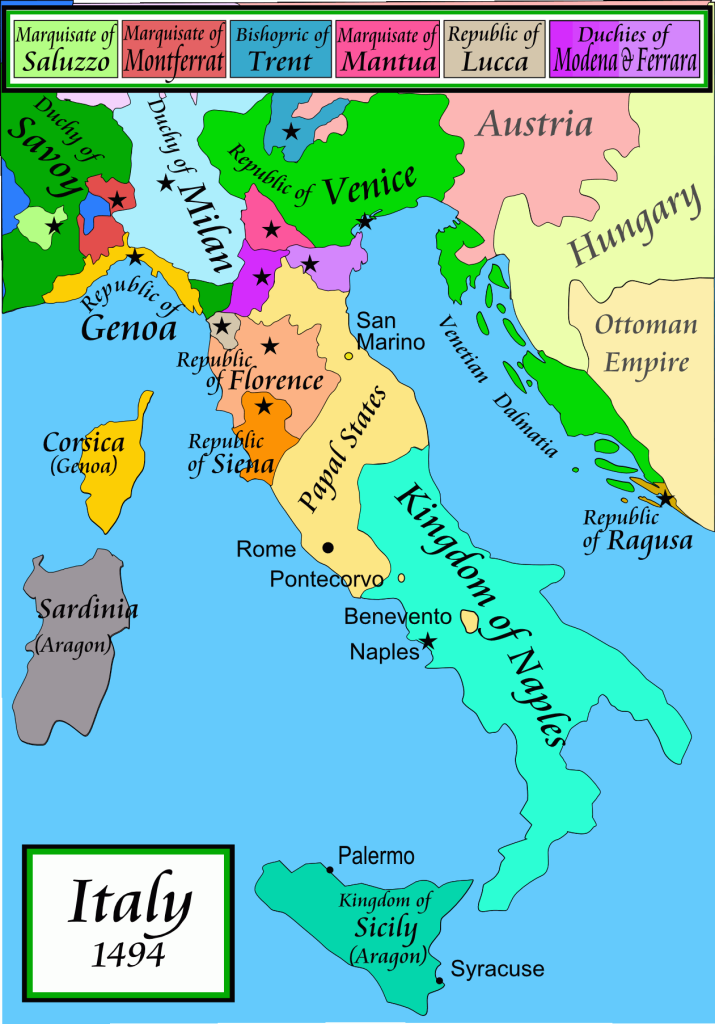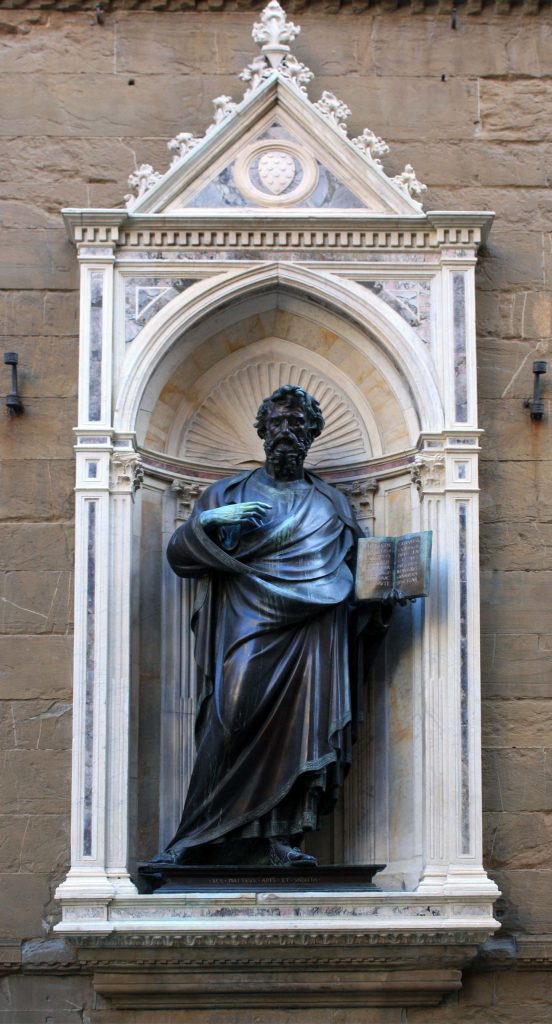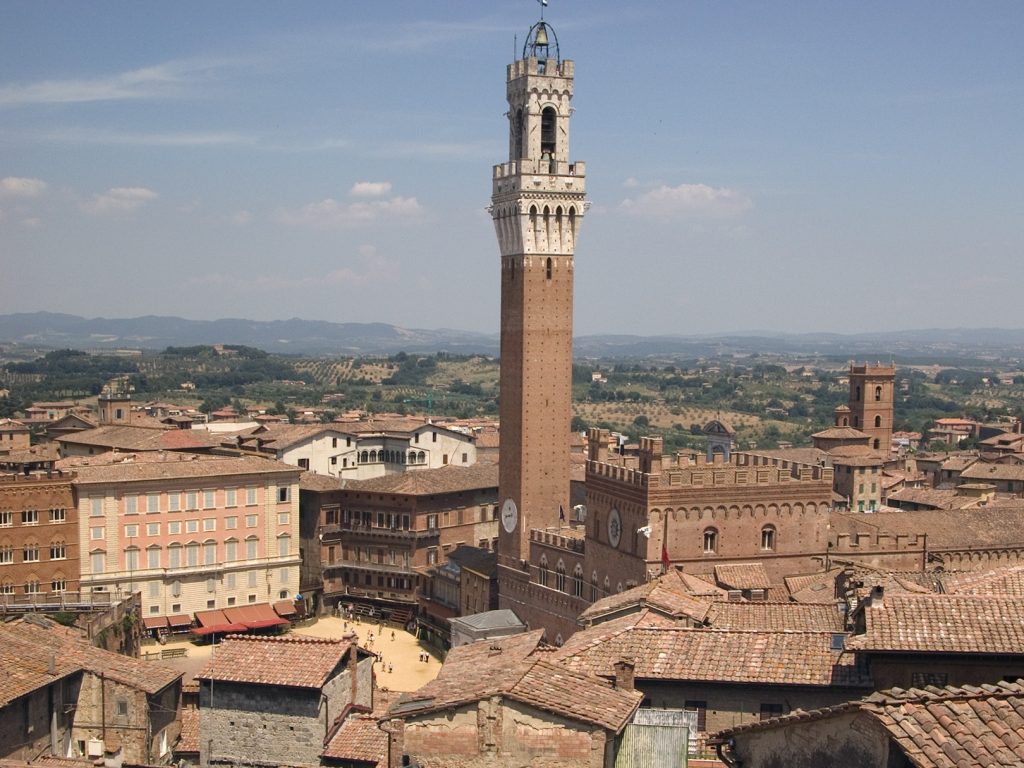Art in the Italian Renaissance Republics
Introduction to art in Italy, c. 1400–1600
Italy did not exist during the period that we call the Renaissance (roughly 1400–1600 C.E.). The modern nation-state that we know today as Italy wasn’t born until the late 19th century. Nor were there such people as “Italians.” Instead we had Florentines, Venetians, Romans, Genoese, Sienese—a person’s identity was tied to the specific city-state or region in which they lived. Although interconnected through social, economic, and political networks as well as a shared ancient Roman past, the Italian city-states were largely independent from one another. Each had its own dialect as well as distinct political and social formations and cultural traditions.

So, if there is no such thing as “renaissance Italy,” there can’t be “Italian renaissance art,” right? Right! Well, technically anyway. While we often frame our considerations of art produced by people living on the Italian peninsula between 1400 and 1600 as “Italian renaissance art,” this generalization can be misleading. Florentines living in 1500 certainly did not see themselves (or their art) to be the same as their Venetian peers. Try asking a New Yorker how much they have in common with a Los Angelino and you’ll get some idea of what I mean. That said, there are shared qualities of form and content across the peninsula (artists traveled and so did styles and subjects) that allow us to recognize general “Italian” trends making “Italian renaissance art” a useful if imperfect designation.
There were three main types of political organization amongst the Italian city-states:

- territories that functioned as republics with governors elected from among the social and economic elite
- sovereign states, governed by a despot who had almost absolute authority; and
- the Papal States, regions under the direct governance of the Catholic Church and headed by the Pope.
Just like today, the political organization of a renaissance territory had a big impact on people’s lived experiences. It is one thing to be the subject of a king, it is very different to be an elected official in a republic. The same can be said about art. Imagery created within a republican context develops differently than that created in a monarchy. While there are many ways to approach the visual material of the past, this chapter considers visual arts produced in republican city-states between 1400 and 1600.
Some of the most innovative Italian renaissance art came out of the competitive world of the republican city-states. In these communities, the governing class of merchants and bankers recognized the power of art and architecture to advertise their success and to showcase their superior wealth and aesthetic judgment. Merchants of good taste and bankers of sound resources inspired commercial confidence. Competition among merchants was also reflected in artistic competition, as when the powerful Florentine money changers guild specifically required Lorenzo Ghiberti to create a sculpture for Orsanmichele that would be bigger (better!) than the one he had just finished creating for the guild of cloth merchants. In their quests to out-do one another, the patrons of republican states helped foster considerable artistic novelty.
Art in Public Spaces

The renaissance city was like a stage, its streets, piazzas, art, and architecture were visual manifestations of an urban identity. Florence’s spectacular Duomo, Venice’s opulent Palazzo Ducale, Siena’s winding streets and hilltop views—these sights spoke to the unique character of each city and its people. In a world in which there was no separation between Church and State, all art placed within the public sphere served to glorify both spiritual and secular powers. The town hall as much as the parish church were sites of devotion—God and his saints, the very hierarchy of heaven, provided the ideal template for city administration. The city had to look the part.
Art in public churches
Italian cities bristled with churches. The rise of new religious orders (such as the Dominicans and Franciscans) in the late Middle Ages and growing populations needing pastoral care meant that church building was a major part of urban development. A church was both a place of worship and a social hub. Of course, church architecture and the art displayed within was intended first and foremost to guide Christians in their faith and serve the glory of God. It didn’t hurt, however, if the art and architecture also reflected the exemplary tastes and erudition of the wealthy individual or prestigious guild paying for it.
Secular art in the public sphere
It wasn’t all religious art (even if we may assume that it was read through a Christian lens). Other genres of public imagery shared space with Christian subjects, sometimes in such close proximity that the symbiotic relationship between Church and State was explicit, such as with Donatello’s monument to the mercenary captain, Erasmo da Narni, placed conspicuously in front of Padua’s cathedral.
At home with friends and family
Contemplating works of art was an important pastime, and not just for religious purposes. Imagery that stimulated learned conversation, prompted contemplation of beauty or provided erotic pleasure were all valued in the domestic sphere. So too were images that celebrated and commemorated family and friends. The genre of portraiture was eagerly embraced by the republican merchant class, drawn like many up-and-comers to its pretensions of aristocracy.
Contemplating the Holy in the humanist home
Home is where the heart is. It is also where one may have their most intimate religious meditations. Humanist-inspired forms infused religious subjects with a palpable physical realism that enabled a deeply personal connection between viewers and the sacred characters depicted. Images of the Madonna and Child, of the Holy Family, of Saints, and biblical heroes were displayed in homes as sites of devotional practice and exemplary models of behavior.[1]
- Dr. Heather Graham, "Art in the Italian Renaissance Republics, c. 1400–1600," in Smarthistory, December 16, 2021, accessed February 21, 2023, https://smarthistory.org/reframing-art-history/art-italian-renaissance-republics/ ↵

